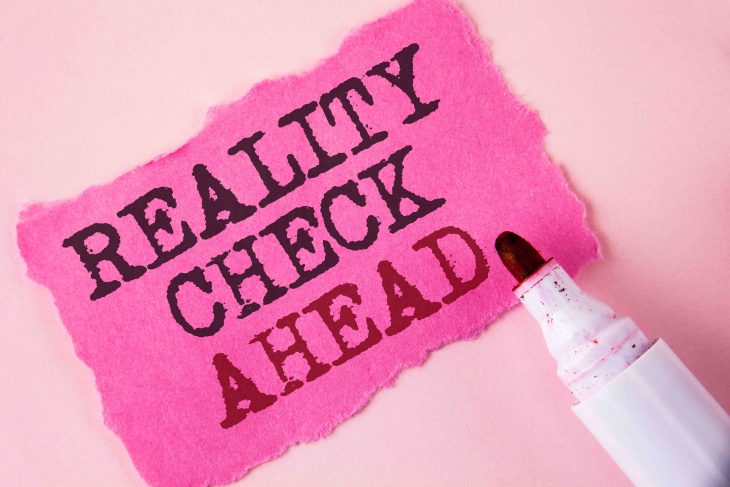
In a world filled with information, it’s not uncommon to encounter misconceptions and falsehoods that have gained popularity over time. These misconceptions often blur the line between fact and fiction, leading us to believe in things that may not be entirely true. In this article, we dive into 20 fascinating facts vs truth, shedding light on the reality behind common misconceptions. Get ready to uncover the hidden truths and expand your knowledge!
Cracking Your Knuckles Causes Arthritis
Truth: The act of cracking your knuckles does not cause arthritis. Knuckle cracking is merely the release of gas bubbles within the joint, and it has not been linked to any long-term negative effects on joint health.
Bats Are Blind
Truth: Bats are not blind. In fact, most bat species have excellent eyesight and use echolocation to navigate and locate prey in the dark. Echolocation allows them to emit sounds and interpret the echoes to create a mental map of their surroundings.
You Should Wait 30 Minutes After Eating Before Swimming
Truth: There is no scientific evidence to support the notion that swimming immediately after eating leads to cramps or poses a significant risk. It’s generally safe to swim after eating, but moderate physical activity may cause some discomfort.
Sugar Makes Children Hyperactive

Truth: Sugar does not directly cause hyperactivity in children. Studies have consistently shown that sugar does not have a significant impact on children’s behavior or activity levels. The perception of increased hyperactivity may be attributed to other factors, such as the excitement of an event or the environment.
Vikings Wore Horned Helmets
Truth: Vikings did not actually wear horned helmets. The image of horned helmets commonly associated with Vikings is a product of artistic interpretation and cultural myths. Historical evidence suggests that Vikings wore simpler helmets without horns for practical purposes in battle.
Lightning Never Strikes the Same Place Twice
Truth: Lightning can strike the same place multiple times. Tall structures, such as skyscrapers or lightning rods, are often prone to repeated strikes due to their height and conductivity.
Humans Only Use 10% of Their Brains
Truth: This is a common misconception. In reality, humans use a significant portion of their brains throughout the day, even during seemingly mundane tasks. Various regions of the brain serve different functions, and the idea that we use only 10% is simply not accurate.
The Great Wall of China is Visible from Space
Truth: The Great Wall of China is not visible from space with the naked eye. While it is an impressive structure, it is too narrow and blends in with the surrounding landscape. Astronauts can only see it with the aid of telescopic lenses.
Bulls Get Angry at the Color Red
Truth: Bulls are not actually angered by the color red. In bullfighting, the movement of the bullfighter’s cape attracts the bull’s attention, not the color itself. Bulls are dichromatic and cannot distinguish between red and other colors.
Goldfish Have a Three-Second Memory
Truth: Goldfish have a memory span of several months and can even be trained to recognize and respond to certain cues. They have better memory capabilities than the popular belief suggests.
Sharks Can Smell a Single Drop of Blood from Miles Away

Truth: While sharks have a keen sense of smell, they cannot detect a single drop of blood from miles away. They can detect blood and other odors in the water at extremely low concentrations, but the notion of their smelling capabilities is often exaggerated.
Napoleon Bonaparte Was Short
Truth: Contrary to popular belief, Napoleon Bonaparte was not significantly shorter than average for his time. His height was around 5 feet 6 inches (1.68 meters), which was average or slightly above average during the early 19th century.
Final Word
In a world where misinformation can easily spread, it’s crucial to challenge our beliefs and seek the truth behind common misconceptions. By embracing a curious mindset and digging deeper, we can unravel the reality and expand our understanding of the world. Remember, facts matter, and by debunking misconceptions, we empower ourselves with accurate knowledge.
So, next time you come across a popular belief, take a moment to question it and explore the truth hidden beneath the surface.
Frequently Asked Questions (FAQs)
Why do misconceptions and false beliefs persist?
Misconceptions and false beliefs often persist due to a combination of factors, including the spread of misinformation, cultural myths, cognitive biases, and the human tendency to rely on anecdotal evidence. They can also be perpetuated through media and popular culture.
How can we separate facts from misconceptions?
Separating facts from misconceptions requires critical thinking, research, and verification of information from credible sources. Fact-checking websites, scientific studies, and expert opinions can help in distinguishing truth from fiction.
Why do misconceptions spread so easily?
Misconceptions can spread easily due to the availability of information on the internet and social media platforms, which allows for rapid dissemination of both accurate and inaccurate information. Confirmation bias and the desire for simple explanations also contribute to the spread of misconceptions.
Are there any benefits to debunking misconceptions?
Debunking misconceptions is essential for promoting accurate knowledge and understanding. It helps prevent the perpetuation of false information and enables individuals to make informed decisions based on reliable facts.
How can we avoid falling for misconceptions?
To avoid falling for misconceptions, it is important to approach information critically and question its source, validity, and supporting evidence. Developing strong research skills and cultivating a habit of fact-checking can help individuals navigate the sea of information more effectively.
Was this page helpful?
Our commitment to delivering trustworthy and engaging content is at the heart of what we do. Each fact on our site is contributed by real users like you, bringing a wealth of diverse insights and information. To ensure the highest standards of accuracy and reliability, our dedicated editors meticulously review each submission. This process guarantees that the facts we share are not only fascinating but also credible. Trust in our commitment to quality and authenticity as you explore and learn with us.


